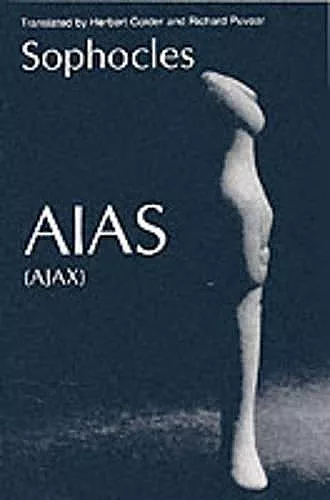Aias
The transformation of a warrior in a changing world
Sophocles author Richard Pevear editor Herbert Golder editor
Format:Paperback
Publisher:Oxford University Press Inc
Published:1st Jul '99
Currently unavailable, currently targeted to be due back around 24th January 2025, but could change

In Aias, Sophocles presents a powerful transformation of the hero, exploring themes of madness, betrayal, and the quest for permanence amid uncertainty.
In this new translation, Aias emerges as a vivid representation of Sophocles' early mastery. The play delves into the Greek tradition, portraying Aias as a once-great warrior who finds himself overshadowed by time. Unlike previous interpretations that have shied away from Sophocles' bold vision, this version captures the hero's transformative journey from a bygone figure to one who defies the constraints of time itself. Aias, known in Homer as the steadfast bulwark of the Achaians, faces a devastating twist when Achilles' armor is awarded to Odysseus instead of him. This act of betrayal drives Aias into madness, ultimately leading to his tragic demise by suicide. In death, he becomes a poignant symbol of lost greatness, marking the conclusion of an era of heroes.
Sophocles skillfully plays with audience expectations, presenting Aias initially as a fallen warrior, a stark contrast to the noble figure depicted in Homer. As the narrative unfolds, Aias transitions from darkness into light, embodying a philosophical perspective that challenges the notion of permanence in a world rife with change. His madness and the betrayal by his peers serve as reflections of a reality where loyalties and friendships are fleeting. Instead of succumbing to despair, Aias chooses to align himself with the absolute truth of his inner nature, transforming his death into a powerful act of destiny.
Through this lens, Aias becomes a profound exploration of human potential in the face of uncertainty. The introduction and notes accompanying this translation aim to illuminate how Sophocles breathes life into this tragic vision, allowing readers to appreciate the enduring relevance of Aias' struggle against the ephemeral nature of existence.
"This book is a brilliant addition to a distinguished series. For the long iambic lines so often used to represent the meter of the original, Richard Pevear substitutes a sprung rhythm--three stressed syllables per line. The result is a great success, an easily speakable version....Herbert Golder's eloquent and incisive analysis of the play locates the controversial figure of Aias in the political and intellectual context of the Athenian fifth century and also explores those aspects of his character that make him unique among the Sophoclean tragic heroes."--Bernard Knox "The beauty and power of this clear, clean version cannot be denied....poet Richard Pevear, writing in a style reminiscent of the spare, stoic, puritan power of Robert Lowell's famous translations, makes the work sing."--Booklist "A jewel for modern English readers. The scholarly critical introduction by Golder provides an excellent background and analysis of this tragedy."--Library Journal
ISBN: 9780195128192
Dimensions: 196mm x 132mm x 13mm
Weight: 136g
112 pages